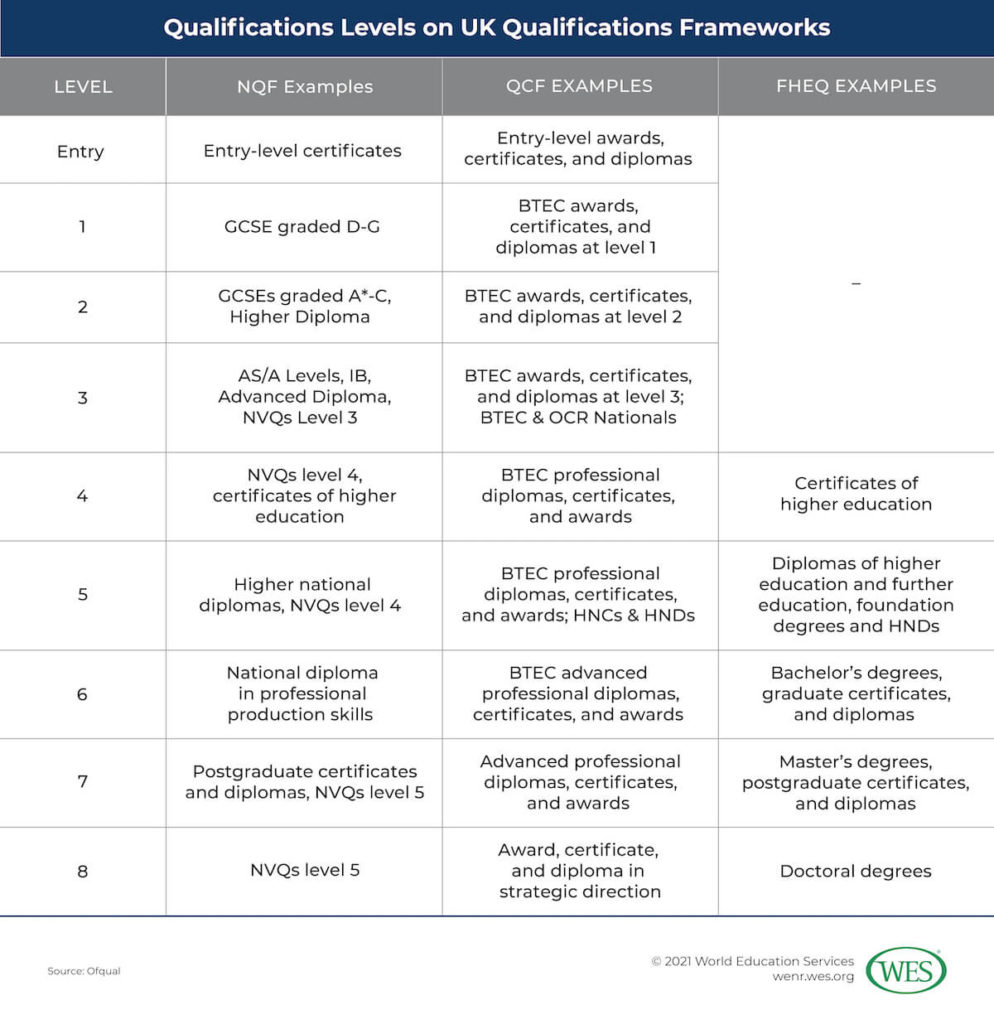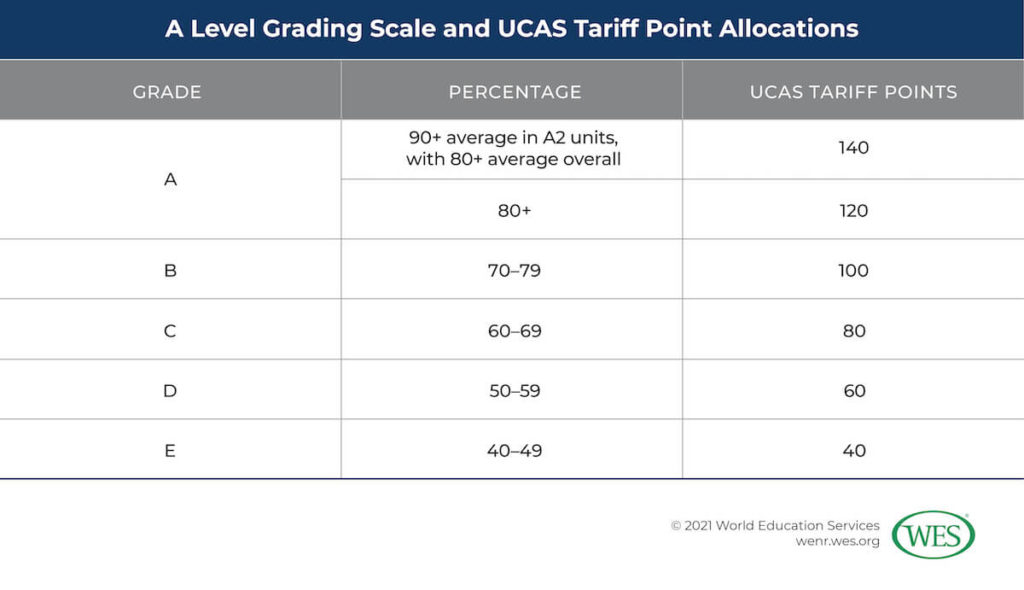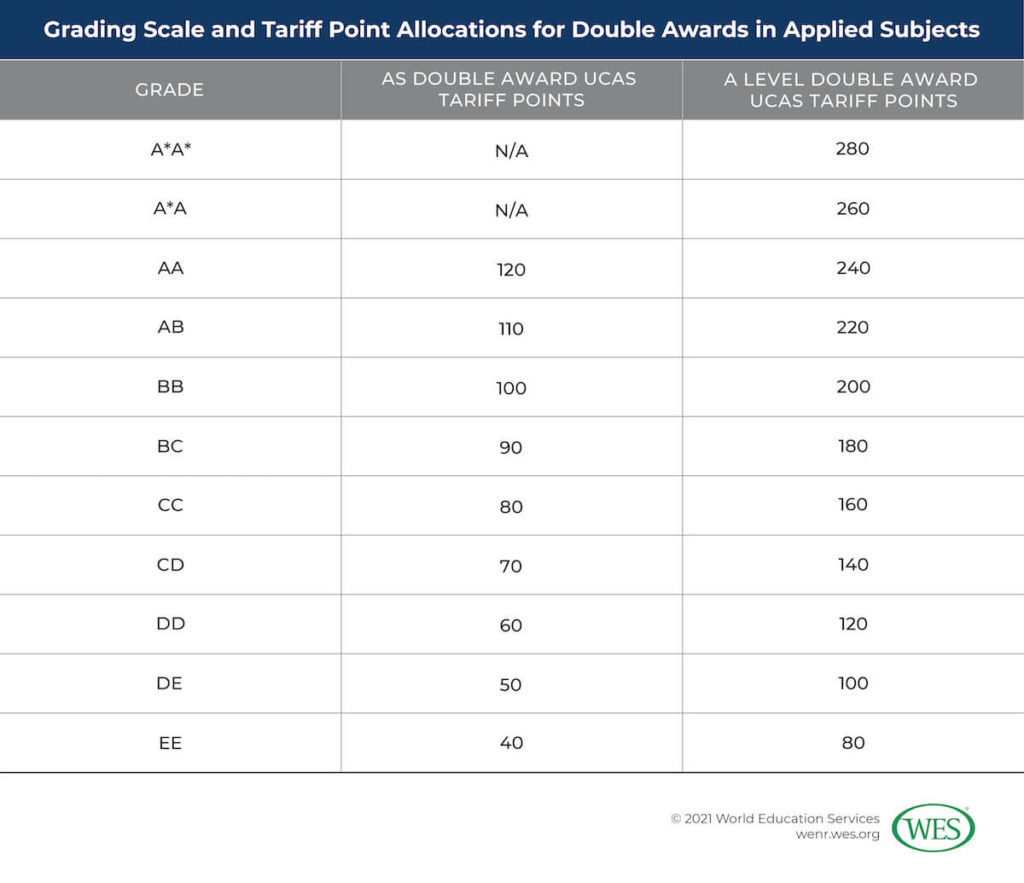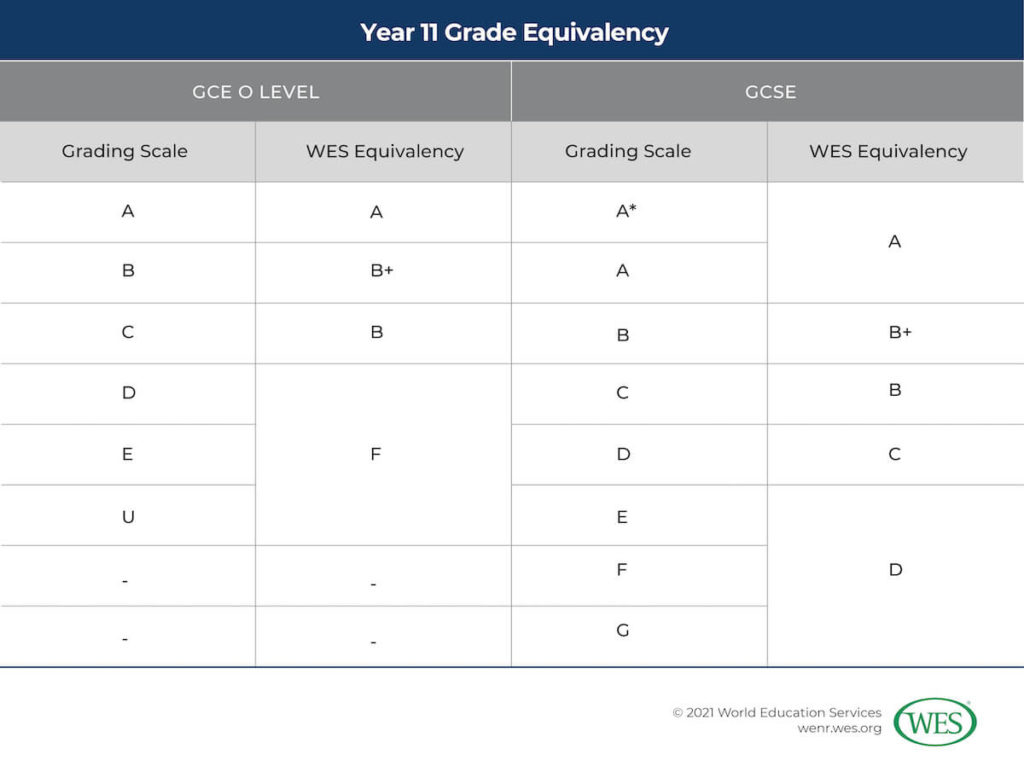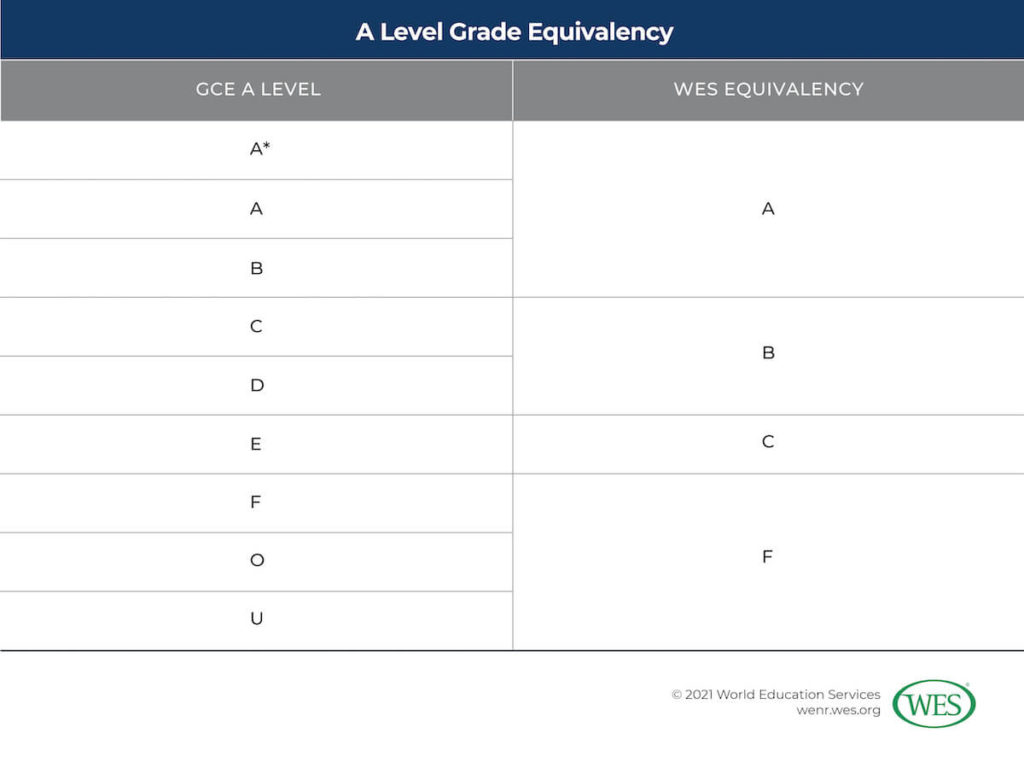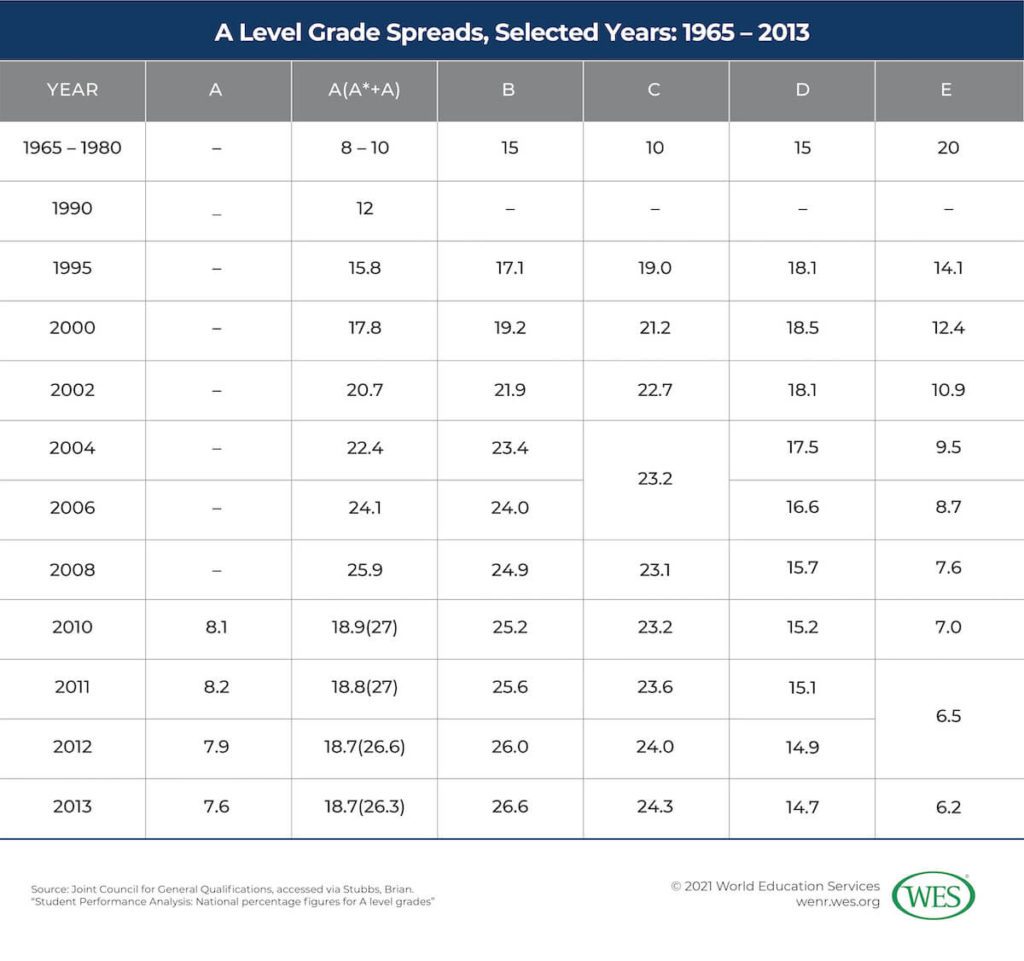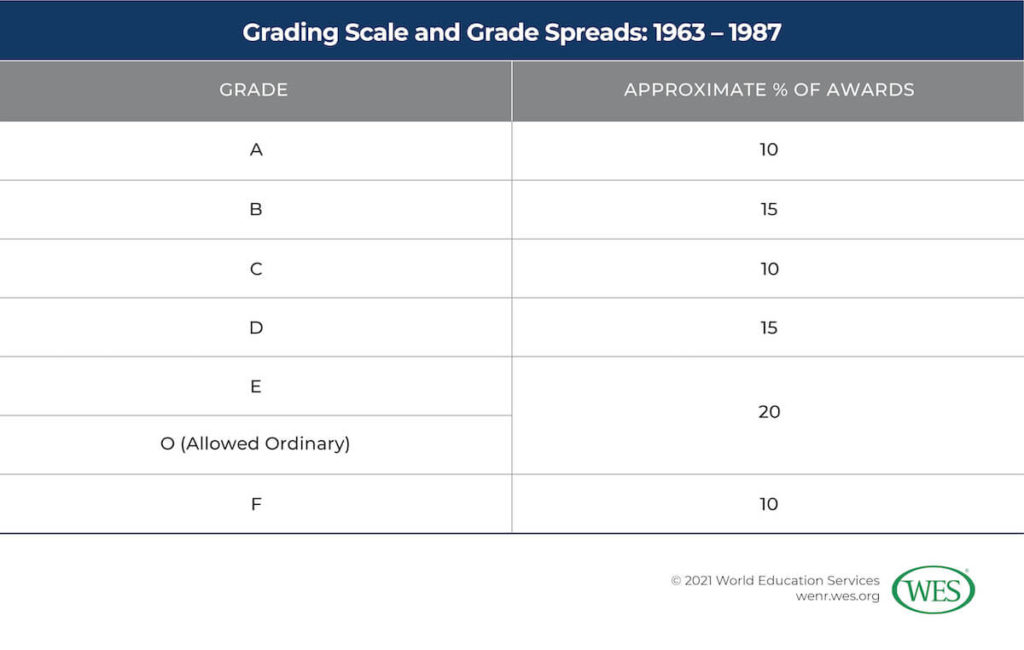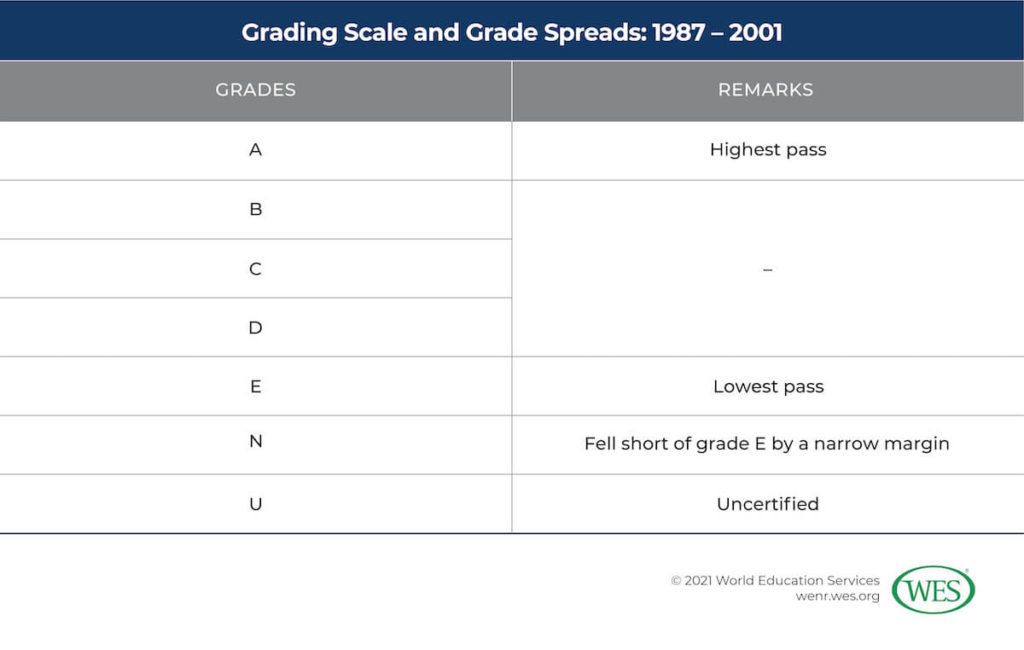Nick Clark, Editor, World Education News & Reviews
The General Certificate of Education Advanced Level, more commonly known as the GCE A Level, is a school leaving qualification offered by secondary schools, sixth form colleges and further education colleges in the United Kingdom, some Commonwealth countries, and at many international schools around the world. In Scotland, the qualification is offered as an alternative to the more commonly taken Highers.
The qualification was first introduced in 1951 to replace the Higher Schools Certificate, and final examinations are normally taken in England and Wales at the end of Year 13 after two years of classroom study, traditionally referred to as the sixth form.
Due to British colonial influence, many education systems around the world are modeled on the British system, but the number of countries still offering A Levels is diminishing. The most recent example of the move away from the British ‘seed system’ is Hong Kong, which recently replaced the Hong Kong A Level with an entirely new Hong Kong Diploma of Secondary Education, while also shortening the duration of schooling from 13 years, per the British model, to 12 years and lengthening undergraduate education from three years to four years – moving it closer to the U.S. model.
Nonetheless, British credentials continue to be awarded at more than 10,000 independent schools the world over through the Cambridge International Examinations board, which has been awarding the International GCSE since 1988, and more recently Edexcel. Both Cambridge and Edexcel also offer International A Level equivalents. Some countries, such as Singapore, offer a customized version of the Cambridge International GCE O and A Level as the exclusive national school examinations. International versions of British school awards are discussed in more detail in the accompanying article [2] of the current issue.
In recent years, there has been an uptick in the number of British school leavers traveling abroad for higher education, with U.S. institutions of higher education proving particularly attractive. From a reasonably steady average of approximately 8,500 UK students attending U.S. institutions of higher education in the first decade of the new millennium, enrollment numbers have been on a gradual increase, last year reaching close to 9,500 students, with approximately half studying at the undergraduate level.
One catalyst for this increased interest is the new relative affordability of a U.S. higher education versus the UK, due to new and significant increases on the cap in tuition fees that UK institutions can charge domestic students. In 2012, the ceiling on tuition fees was raised from a little over £3,000 ($4,800) to £9,000 ($14,400) annually. While the new upper limit on fees, charged by a majority of UK universities, is still considerably lower than the $25,000 [3] average annual tuition fees that U.S. universities charge international students, it does significantly change the cost calculation when one considers generally lower U.S. living expenses and the experiential value of studying internationally. For this reason alone, we believe that U.S. institutions of higher education will continue to see strong and increasing interest from school leavers in the UK.
In this article, we offer a comprehensive guide to the GCE A Level, the most common UK qualification used for university entry, including advice on how best to evaluate the award and suggested grade equivalencies.
Qualification Frameworks
A levels are considered level 3 qualifications on the National Qualifications Framework [4] (NQF). All qualifications listed on the NQF are regulated by the Office of Qualifications and Examinations Regulation [5] (Ofqual), the UK regulator of examinations and awarding bodies. The NQF allows for the comparison of national qualifications, but not the transfer and accumulation of credits, as is the case for more vocationally oriented awards covered under the Qualifications and Credit Framework [6], introduced in 2010.
All awards recognized under the NQF are comprised of units, rather than credits, that will only be recognized when the full program is completed. Academic higher education programs are not covered under the NQF. These programs are covered under the Framework for Higher Education Qualifications [7] (FHEQ). The programs and awards covered by the QCF, NQF and FHEQ are eligible for state funding in England and Northern Ireland.
The Welsh authorities have their own Credit and Qualifications Framework for Wales [8], while Scotland operates its own education system and its own 12-level system as defined by the Scottish Credit and Qualifications Framework [9].
All regulated qualifications for England, Wales and Northern Ireland can be found in Ofqual’s Register of Regulated Qualifications [10].
Level 3 qualifications such as the A level are designed, among other things, to prepare students for higher studies at the tertiary level. In total, there are nine award levels covered by the QCF, NQF & FHEQ:
General Certificate of Secondary Education
Before commencing A level study, students take Year 11 examinations (age 15-16) known as the General Certificate of Secondary Education [12] (GCSE) in a range of subjects (eight – 10 most commonly). Nearly all students taking GCSEs through the school system are required to take English, mathematics and science, with most other fields of study being elective.
The GCSE examinations have traditionally marked the end of compulsory schooling in England, but from 2013 the school-leaving age has been raised to 17. The extra post-16 year of training does not have to be school-based, it can also be undertaken as an apprenticeship or full-time employment combined with part-time education or training. By 2015, compulsory education or training in England will be raised to age 18. In Scotland, Wales and Northern Ireland, the school-leaving age remains at 16.
The GCSE system was introduced in 1986 as a single system for secondary-level education, merging GCE O Level and CSE qualifications. It was designed to create a single examination for all pupils, of all abilities, whatever type of school they attended and to ensure that students were leaving school with some form of qualification in hand. Under the O Level/CSE system, as many as 40 percent of school leavers left school without a qualification. The new awards were tied to standards set out by the government under the national curriculum.
Further changes to the Year 11 examinations were made in 2009 with updates to many subject criteria and the introduction of increased flexibility in teaching and assessment to encourage innovative learning. Planned future subject-specific reforms in key subject areas, such as English, science and geography, are discussed on the Ofqual website here [13]. All GCSE’s are nationally regulated by Ofqual and designed to comply with the national curriculum.
Internationally administered GCSE-level examinations, specifically the International General Certificate of Secondary Education offered by Cambridge International Examinations and Edexcel are discussed in the accompanying article [14] of this issue of WENR.
Entry to A Level – or Equivalent – Programs
A levels are typically taken by students looking to continue on to higher studies. Earning five or more A*– C grades in GCSE examinations, including English and mathematics, is often a requirement for students wishing to continue their studies at the GCE Advanced Level. Additionally, many sixth form schools or colleges require that students choosing a particular A level program have – at a minimum – a C grade or better (more commonly a B grade is required) if the subject is taken at the GCSE level. More selective schools or colleges will require As and Bs in at least six subjects.
Students looking for a more career-oriented or applied post-16 training path, focused on coursework rather than examinations, can take BTEC programs. These can be taken alongside A levels, counting for one or two A levels, but are more commonly taken independently. Students can also take the BTEC Level 3 Extended Diploma in one subject. This two-year program is considered equivalent to the three A levels typically required for university admission. BTEC programs are often taken by students that have not performed well on their GCSE examinations or who perform better under a less exam-focused, more applied learning structure.
A & AS Level Structure & Assessment
Since its introduction in the postwar years, the General Certificate of Education Advanced Level has undergone various rounds of revision, most recently in 2000 with the introduction of a series of reforms designed to create a more flexible post-16 system allowing for a broader curriculum and greater choice without sacrificing the depth that A levels are known for, or reducing overall standards.
In a bid to achieve these aims, the following changes were implemented:
- The GCE Advanced Subsidiary (AS) was introduced, both as the first year of the full GCE A Level and as a substantive, standalone qualification.
- The structure of the A level was revised and a modular system was introduced. A2 units were introduced as the second year of upper secondary to complement the first-year AS level and to make up the full A level.
- The standalone Advanced Supplementary (AS) qualification was phased out.
From 2000-2007, most A level qualifications were based on six roughly equal units, or modules, with three units constituting the first (AS) year of sixth-form studies (Year 12), and the second three units – known as A2 – making up the second and final year (Year 13).
From 2008, all A levels became four-unit awards, with the exception of earth sciences, electronics, environmental science, geology, mathematics, music, some languages and A levels in applied subjects. The 2008 revisions were introduced in an effort to make A levels more challenging and to provide greater distinction for the highest achieving students, while also reducing the amount of testing students had to undergo. Although the number of modules and testing was reduced, content was not.
With regards to curriculum and assessment, students were given more open-ended questions requiring extensive essay responses, more questions requiring a synoptic overview of the content, the inclusion of an extended coursework project, and the introduction of an A* grade for very high achievement.
The Advanced Subsidiary (AS) Level becomes a freestanding qualification if the units taken and examined are ‘cashed in’ after the first year of study; otherwise, the AS units constitute the first half of a full A level. It is also possible for students to take one or more AS subjects in the second year of upper secondary schooling as standalone qualifications. The A2 year leads to the award of the full A level only.
Assessment
Assessment during the two years of the A level occurs both externally and internally, with the conceptually more demanding A2 units assessed at the full A level standard and the less demanding material of the AS units assessed to a level expected from students in the first half of an advanced program of study. National A level specifications permit a maximum of 30 percent internal assessment, including essays, presentations, projects, and science experiments.
In all subjects other than mathematics, students are assessed in such a manner that they must demonstrate competent written communication skills. Examinations take place in January and mid-May to the end of June. Students can take AS and A2 units in stages or all together at the end of the A level program. All units are available for examination in the summer, but not in January. However, it should be noted here that as of this year, all January examinations are being phased out and will no longer be available (see below under ‘Current A-Level Reform).
Students sit for examinations at the end of both years of study. Exam content varies slightly where subjects are offered by more than one awarding body. In an effort to promote fairness across examination boards and indeed from year to year, a Uniform Mark Scale [15] is used to weight grade thresholds according to the perceived difficulty of a particular examination versus previous sittings, as judged by post-examination committees.
Awards are issued two times a year, following the June and January examinations. Students are able to retake AS units, if desired, and have the superior results count towards their overall A level score if they go on to complete the second year (A2) of upper secondary study. However, to earn a new grade for the standalone qualification students must retake all units under the award.
While students can take as few or as many A levels as they choose, the standard full-time load is three to four subjects typically taken in fields relevant to intended study at the tertiary level. A common pattern of study for many students is to take four subjects in Year 12, before dropping one by ‘cashing it in’ as an AS level qualification, and continuing with three subjects in Year 13 at the A2 level, yielding ‘three and a half’ A levels (three full A levels and one AS level).
GCE A & AS Levels in Applied Subjects
A levels in applied subjects are designed to prepare students for both employment and further study. In 2005/06 they replaced the Advanced Vocational Certificate of Education, informally known as ‘Vocational A levels’ or AVCEs. The structure is very similar to the GCE AS/A2 model and there is no formal distinction between applied subjects and academic GCEs as was formerly the case with the old AVCEs.
Programs in applied subjects are designed in relation to the National Occupational Standards [16] detailing required skills in relevant workplace sectors. Learning is often supported by professional and employer input.
To promote flexibility, A Levels and AS Levels in applied subjects are offered in four different formats:
- AS – three AS units
- AS double award – six AS units
- A level – three AS and three A2 units
- A level double award – six AS and six A2 units.
Students take a mix of core mandatory units and elective units. The mandatory units for individual subjects vary depending on the awarding body.
Assessment in applied subjects is based on a combination of externally assessed written papers (typically one-third) and internally assessed coursework. Assessment criteria take into account the students’ ability to apply their skills, knowledge and understanding in a vocational context.
Awarding Bodies
In order for an award to be recognized, it and the awarding body must be accredited by one of four UK bodies:
- Ofqual [5] for all qualifications in England (and vocational qualifications in Northern Ireland)
- The Welsh Assembly Government [17] for all Welsh qualifications
- The Accreditation arm [18] of the Scottish Qualifications Authority [19] for all Scottish qualifications
- The Council for the Curriculum, Examinations & Assessment [20] (CCEA) for general qualifications in Northern Ireland.
Currently there are over 180 awarding bodies recognized by Ofqual alone. Regulated qualifications are listed on the websites of the qualification regulators. The most comprehensive list is the Ofqual Register [10], which has a searchable database of all qualifications and awarding bodies regulated in England, Wales and Northern Ireland.
Schools and colleges are free to choose which examination board they use on a subject-by-subject basis, with students often taking examinations from multiple boards when sitting for their A levels. Most boards offer a range of qualifications in a range of fields, but not all offer every qualification in every area. At the GCE Advanced Level, there are five awarding bodies:
- AQA [21] (Assessment and Qualifications Alliance)
- CCEA [20] (Council for the Curriculum, Examinations and Assessment)
- Edexcel [22] (Pearson)
- OCR [23] (Oxford, Cambridge and RSA Examinations)
- WJEC [24] (welsh Joint Education Committee)
A full list of currently available A and AS levels and their awarding bodies is available from the Ofqual Register of Regulated Qualifications [25]. The register currently lists 266 A level titles and 264 AS level titles.
The boards, as they exist today, are the result of countless mergers and organizational changes over the years, so older A level qualifications are likely to have been awarded by boards not noted above. Edexcel is the only board owned and operated by a for-profit company (Pearson).
Curriculum Content and Subject Areas
As noted above, there are currently a total of 266 A level and 264 AS level titles. Detailed information on subject offerings, curriculum content, and sample examination papers can be found on the websites of the five awarding bodies at the following links:
Grading
A level examinations are graded on a scale of A* to E. Students that take the full A level in addition to the AS are awarded one grade for each subject, with the AS results being subsumed into the A level point score if not ‘cashed in’ as a terminal credential after the first year of study. For universities using the centralized Universities and Colleges Admissions Services [30] (UCAS) process for admission, grades are also attributed Tariff Points (see below for an explanation of Tariff Points) as follows for each A level grade:
For AS qualifications students are graded on a scale of A – E (no A*), with UCAS weighting as follows:
For both A and AS levels, a ‘U’ indicates an unclassified performance and is not certified.
The same grading system and UCAS Tariff Points are used in applied subjects as in other GCE AS and A level subjects. However, the AS and A double award is reported as follows:
The final grade of each A level is totaled using a points-based system, known as the Uniform Mark Scale [15], which is weighted to account for variances in exam difficulty from sitting to sitting and board to board. An A* is awarded to candidates who have achieved an A grade overall in their A level (80 percent), and 90 percent of the maximum marks on the Uniform Mark Scale in their A2 modules.
WES Credential and Grading Equivalency
World Education Services recommends advanced placement credit on a subject-by-subject basis for each A level examination completed, both in terms of U.S. equivalencies and Canadian equivalencies. Credit is recommended for most subjects with the exception of “General Studies” or “General Paper.”
GCE O Levels were more academically rigorous examinations than the GCSEs that replaced them, and at the time they were offered (up to 1987) only 20-30 percent of secondary school leavers actually sat for the examinations.
The GCSE was intended to give students more choice and was made more accessible to a greater student population. GCSE’s are taken at two different levels, higher and foundation. The first level is more academically challenging then the second level. Presently, almost all secondary school leavers take GCSE’s.
As GCE O Levels were more rigorous, we do not recommend a grade equivalent to C. GCSE’s at higher level are awarded with grades of A*- D and foundation exams C-G. Students are free to choose the level of examination, so we see combinations of foundation and higher-level exams. This difference in academic level is reflected in our grade conversion.
A Level Equivalency
The equivalencies that WES issues are based on the number of U.S. university credits recommended. Based on a review of the A level curriculum, the following credit recommendations have been established:
Completion of a full GCE A Level is considered comparable to completion of two consecutive, first-year undergraduate courses in a given subject (e.g. Math 101 + Math 102). Thus, we recommend eight U.S. semester credits per subject.
As GCE AS Levels are taken after the first year of sixth form, and comprise half an A level, we recommend four U.S. semester credits per applicable subject.
For the completion of two to three GCE A or equivalent combination of GCE AS, WES recommends one semester of undergraduate study, with a maximum of 24 credits. For four GCE A (or 3 GCE A + 1 GCE AS), we recommend one year of undergraduate study.
For information on WES documentation requirements for credential evaluation of UK secondary credentials, please visit the WES Required Documents [36] page and choose United Kingdom from the drop-down menu.
Grade Inflation
For the first time in almost 30 years, the number of ‘A’ grades awarded as a percentage of the total fell in 2012 versus the year prior. This was repeated in 2013, leading some policy makers to claim an end to the grade inflation that has been a constant criticism of the A level system for decades.
Those voicing criticism have pointed to a ‘dumbing down’ of the qualification as borne out by studies [37] on ability tests that have shown that students of similar ability today are achieving on average about two grades higher than they were in the late 1980s.
Although government and testing bodies have said that improved scores are the result of better teaching and higher levels of achievement, universities have complained that the increasing number of top grades has made it hard to make distinctions between the best students. As a result, many universities have introduced their own entrance examinations, such as the BMAT [38] (medicine) and LNAT [39] (law) for specific programs.
UCAS Tariff & Admission to Higher Education
Admission to higher education programs is dependent most commonly on an applicant’s achievement in level 3 qualifications on the National Qualifications Framework, [6] most commonly GCE A & AS Levels and BTEC National Certificates/Diplomas. However, the Universities and Colleges Admission Service (UCAS) reports that there are currently over 3,000 different level 3 qualifications available in the UK, with a mix of different grading structures.
Most university departments are looking for a minimum of three A level passes when they make conditional offers of admission based on a student’s predicted A level grades at the time of application. However, with the diverse range of pre-university qualifications on offer, the UK’s centralized admission service has instituted a points system to weight the grades of the various different qualifications that can be used for tertiary admissions, know as the UCAS Tariff [41]. This weighting can be referenced through a long list of Tariff Tables [42]. Various different online outlets also offer tariff calculators derived from the tables.
It should be noted that not all universities and departments use the UCAS Tariff system for entry, and those that do often take into consideration other factors.
By way of example, an admissions offer might indicate the need for 300 Tariff points, while also stipulating that acceptable qualifications are A levels, Scottish Highers and BTEC National Diplomas. A student taking three A levels and one AS level, and scoring an A, C & D (120, 80, 60 = 260) in his or her A levels and a C (40) in the AS level would earn admission with a total of 300 UCAS Tariff points.
An offer might also stipulate that the student have earned at least 280 points from at least three A levels, in which case, in the example above, the student would not meet the entry standard. Particular university departments might also require a specific points score, to include a specific grade or better in a particular A level subject.
On its website, UCAS points out that approximately half of all universities and college programs make reference to the Tariff, suggesting that it is not universally used or applied. Some institutions of higher education will list their entry requirements and make offers of admissions using only Tariff points, some will ask for specific qualifications and grades only.
In addition to Tariff Points for British qualifications, UCAS provides tariff equivalencies for a range of international school-leaving qualifications, offered by both British awarding bodies and overseas bodies. These can be accessed, where available, through the UCAS guides and resources page [43].
Current A Level Reform
In late 2012, Michael Gove, the Secretary of State for Education, announced his intention to reform A levels to ensure that their ‘single, most important purpose’ is to prepare students for higher education. To achieve this, Gove believes that universities should have a greater stake in the design and content of the curriculum and examinations, with awarding bodies being asked to provide evidence of involvement from higher education institutions before a qualification is accredited by Ofqual or other national regulator.
In addition to reforming the curriculum content of specific subject areas, the government also plans to abolish the one-year AS level as the first year of a full A level, favoring instead a return to pre-2000 linear end-of-program A level examinations and a toughening of standards to avoid a “formulaic” approach to education and halting a decades-long trend of grade inflation (see above).
Under the plan, the AS level will – from September 2015 – return to its pre-2000 roots of being a standalone qualification. Marks from these examinations will not contribute to A level grades and the AS level will broadly remain at its current standard.
Additionally, January examinations will no longer be available, with the fully linear examinations to take place at the end of the full two years. Students who started their programs of study in September 2013 are now only able to sit examinations in the summer.
At the time of writing, proposed changes to 14 A level subjects were still under consultation [44], with the prior findings of a university-led review, established by Ofqual, advising that most A level subjects were broadly fit for their purpose [4] and able to be altered by exam boards alone. The exception was found to be in mathematics and languages, which require “major, substantive changes” for the planned move to entirely linear programs. The introduction and first teaching of those new programs has been delayed until 2016, with first examinations in 2018.
In other subjects, the first new A level examinations would be administered in 2017, with the first cohort beginning studies in 2015 for the following subjects:
- English Language and Literature
- English Language
- English Literature
- Physics
- Chemistry
- Biology
- History
- Geography
- Psychology
- Art and design
- Sociology
- Business studies
- Economics
- Computing
From that point forward, a new A Level Content Advisory Board, composed of representatives from top ‘Russell Group [45]’ universities, will play the leading role in annual post A level review processes to make sure examinations are in line with university and workplace standards.
Phased Out Pre-University Qualifications
Advanced Level/Advanced Supplementary
The GCE A level was first introduced in 1951 to replace the Higher School Certificate. Typically, it was taken two years after the Ordinary (O) Level examinations or GCSEs (which replaced O levels in 1988). Unlike the current A level, there was no requirement that students must have taken the subject(s) of choice at GCSE or O level, meaning it was less integrated as encouraged under the current system.
Students chose how many A level subjects and examinations they took over the two-year program of study. However, most looking to continue on to higher studies took three subjects, with some taking fewer and exceptional students taking four. It was not uncommon for students to take an Advanced Supplementary (AS – not to be confused with the Advanced Subsidiary AS of today) examination to complement their three A level programs of study. The AS was introduced in 1989 as part of an effort to broaden the scope of sixth form education from the typical three A level subjects.
The AS was intended as a qualification of equal difficulty to the A level, taken at 18, but with half the content (and as such half the “value” for university admissions purposes). However, the AS never really gained much traction among students, and was therefore replaced with the current Advanced Subsidiary and A2 system.
Former Grading Scales
From 1963 to 1987 examination boards graded on an A – F scale with approximate proportions of the total average allocated to each grade as follows:
The grading curve was suggestive only and varied by examining board and from subject to subject. The O grade indicated a performance equivalent to at least grade C at GCE O level. Prior to 1963, A levels were assessed on a pass/fail/distinction basis.
In 1987 the grading system was changed as follows:
Sample Documents
The attached PDF file [48] offers a set of annotated sample documents for: The Cambridge International General Certificate of Secondary Education (pages 1 – 5); the Cambridge International General Certificate of Education O Level (pages 5 -7); the OCR General Certificate of Education AS Level (page 8); the OCR GCE A Level (pages 9-10); and the WJEC GCE Advanced Level (pages 11-12).


